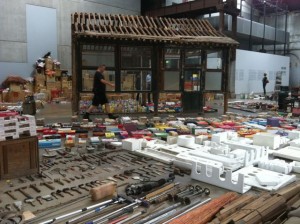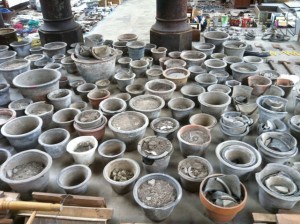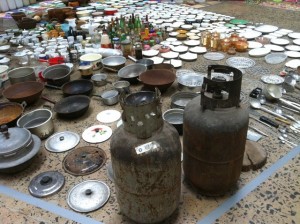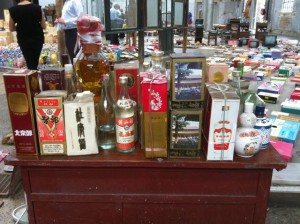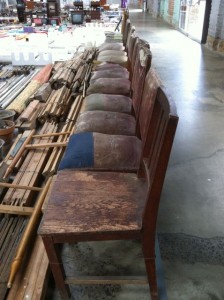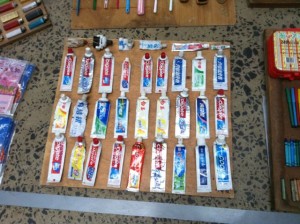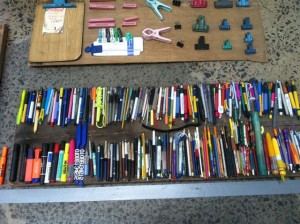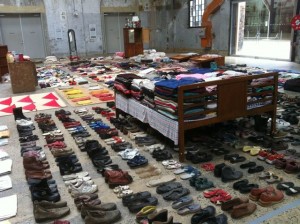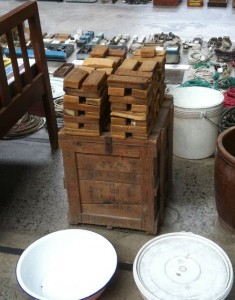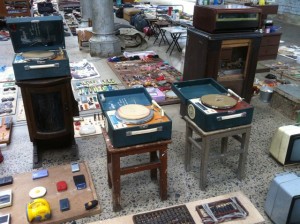Archive for February 17, 2013

Toothpaste tubes and bird cages: photographs of Waste Not, by Song Dong
Feb 17th
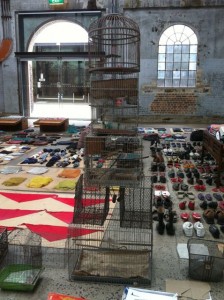 Last week I visited the Song Dong exhibition, Waste Not, about which I have written previously (see my earlier post) and took some photographs which show the detail of this wonderful Chinese artist’s installation at Carriageworks, Sydney.
Last week I visited the Song Dong exhibition, Waste Not, about which I have written previously (see my earlier post) and took some photographs which show the detail of this wonderful Chinese artist’s installation at Carriageworks, Sydney.
It is strangely moving to walk quietly between the carefully laid-out groupings of hoarded objects, almost a sense of respect such as you might feel upon entering the home of a person who has just died.
A gallery staff member approached me to ask whether I liked the installation, and I told her I found it compelling. She told me something interesting. She said it was her own habit to throw things away rather than hoard them like Song Dong’s mother. When she told the artist that she never kept anything, he had looked at her sympathetically, sad for her that when she died her loved ones would be denied the chance to re-find her by sorting through the objects which had accompanied her through life.
I took these pictures, fascinated by the scale and detail of the work. I particularly like the picture at left, which shows a very sculptural stack of old wire bird cages.
The Japanese believe that objects take on a spirituality or presence, and this is far from alien to the western experience. If you want an example of this close to home, you have only to think of the recreation of a corner of Margaret Olley’s Paddington home at the Tweed River Art Gallery. The project, which you can read about if you click through, is a painstaking reconstruction of the artily cluttered environment in which Olley lived and by which she was continually inspired. To Olley, the vases of dying flowers were just as valuable as the vases of fresh ones. Perhaps Olley would have found much to interest her in Song Dong’s beautiful, empathetic art work. I like to imagine Olley and Song Dong’s mother together, conversing about their lives and the objects they loved.
Waste Not is on until March 17.
Elizabeth Fortescue, February 18, 2013
